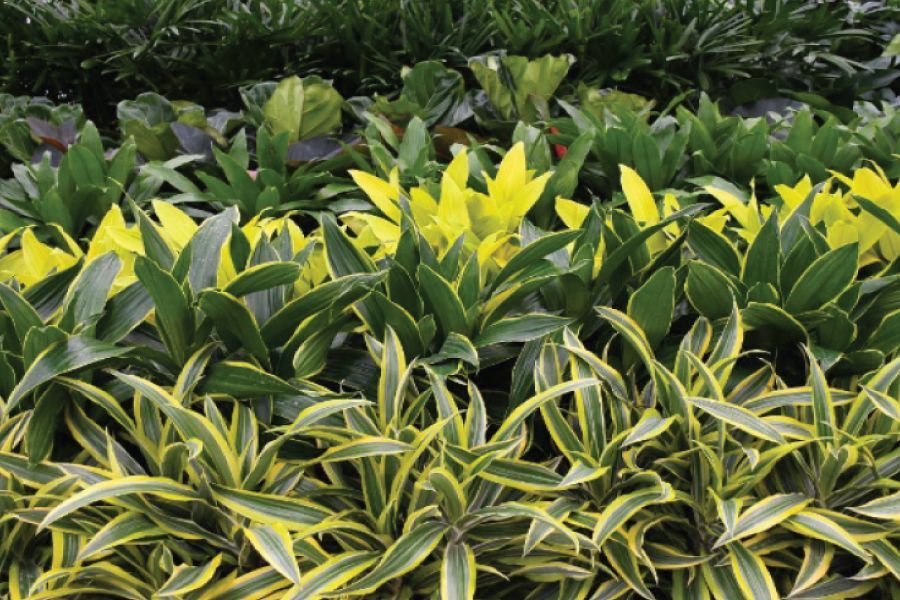“It’s YOUR turn, Monstera”, so says the National Garden Bureau, of which I am a member. From their website: Each year the National Garden Bureau selects one annual, one perennial, one bulb crop, one edible, one houseplant, and one shrub as our “Year of the” crops. Plants are chosen because they are popular, easy-to-grow, widely adaptable, genetically diverse, and versatile.
I’m turning up the volume here in praise of their selection for this year’s houseplant, Monstera! I love this plant. It’s got DRAMA all over it, and not in a bad way. I took this photo while visiting Portugal’s Botanical Garden and was in AWE of the size of the leaves. They were at least 2 to 4 ft long and look at the light colored “rope” climbing up the tree… that’s an aerial root.
Monstera deliciosa Lisbon Botanical Garden 2023
Speaking of those aerial roots, a long time ago, they were used to make ropes in Peru and baskets in Mexico.
Monstera deliciosa, the most well-known of the species was written about in plant books starting in 1849. Monstera are found in tropical regions of the Americas where they can grow to 90 ft tall!! They are called hemiepiphytes, meaning roots grow in the soil and in the air where the plant attaches itself to trees. This allows Monstera to take in water and nutrients from the soil & the air. The fenestrated leaves may have evolved to help rain pass through the enormous leaves, saving them from ripping and damaging the plant. Not all monstera have striate. And not every leaf will. But take a look at this beauty found at Gertens…
Monstera deliciosa
There are multiple species of Monstera, all of which are perennials in climate zone 10. Clearly here, we love them as houseplants. Monstera deliciosa is sometimes called the Swiss Cheese plant. It’s heart-shaped perforated leaves grow on thick plant stems. In their natural environment, they will produce a fruit that tastes like a combo of pineapple, banana and mango. And wouldn’t ya know, the name deliciosa, comes from the delicious fruit and the size of its leaves.
My Monstera d. on the stepstool. You can see striations in several leaves.
Mine really could use more light but it’s growing! That’s a Black Tie heuchera on the right. It’s been with me (in the house) for 3 years. Enough about mine, the real star of the show recently has been ‘Thai Constellation’.
'Thai Constellation' (mature example) found at Gertens. Photo by Lizzie Danich
And for a smaller version:
A baby Thai at Gertens! Photo by Lizzie Danich
Their care does vary somewhat by species so it’s important to read the label or talk with someone in the nursery you buy it from. Overall, Monstera need:
· Bright, filtered, indirect light – grow lights work too. Avoid direct sun
· Plant in well-draining, porous soil mix that contains bark, peat moss or coconut coir
· Make sure the container has drainage holes, monsteras do not like wet feet
· Support the plant with a moss pole or trellis for climbing. You can’t see it in my photo, but I have a moss pole in the middle of the planter
· Water consistently allowing the top 2 inches to dry in between
· You can use terra cotta pots or clay pots with drainage holes to help avoid standing water
· If you have a humidifier, use it. If not (I don’t) then mist the leaves. I have a spray bottle under the stepstool
Fun fact: Feng Shui practitioners believe Monstera deliciosa brings positive energy and abundance to a space.
Fun fact: Monstera adansonii Variegata once sold for $38K. Yup, ONE plant. Th adansonii species was the first of the monstera species to be discovered by French botanist Michel Adanson in 1763.
Pushing Positivity,
The Garden Scoop






